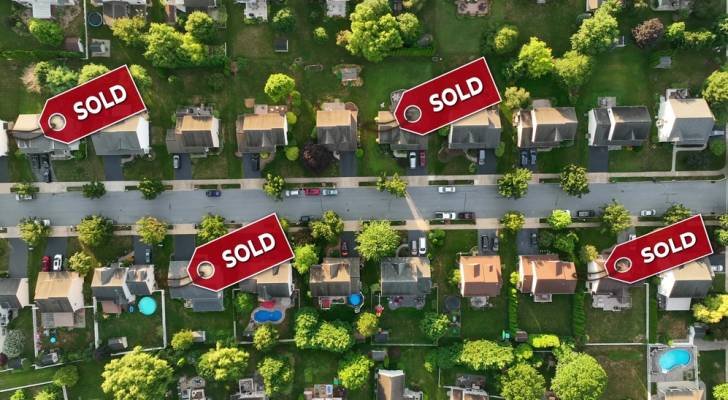
Much like trying to predict the ever-changing weather forecast, pinpointing — with accuracy — the value of your home using an online estimator tool can be a futile undertaking.
Despite all the data points crunched and algorithms used, the three biggies in the world of home valuation — Zillow, Redfin, and mortgage giant Chase — demonstrate so much disparity that you might think you were comparing a suburban McMansion to its humble tool shed out back.
These sites typically use a combination of public and user-submitted data for its formula. However, there are plenty of discrepancies when using all three platforms. As a result, the most vital part of selling your home — its value — is ultimately up in the air.
It’s all a recipe for chaos on the homefront. To illustrate this point, we take a look at one specific listed property in Chicago’s cozy Horner Park neighborhood.
When home values are all over the map
The home in question resides on North Mozart Street and was sold to its current owners for $750,000 in 2017.
Built in 1915, the current estimated value of the renovated 3-bedroom, 3.5-bath home has appreciated by at least 18%. Three home estimator tools agree on this much. Yet, one outlier says the property is actually worth less.
On one end of the spectrum, Zillow’s Zestimate says the value is at $1,002,900 as of mid-July — more than 40% above the 2017 purchase price. Meanwhile, Redfin pegs the estimated value at $942,976 during the same period.
However, Chase arrives at a more conservative number: $881,800. It should be noted, though, that this estimate comes with a comprehensive neighborhood map with nearby home prices listed.
Arguably the most accurate site, Realtor.com states the home is now valued at $877,300 as of mid-July. It partners with three different data companies to paint a more comprehensive picture — although one of those companies, Collateral Analytics, reports the baffling low figure of $681,431.
The accuracy of home value estimator tools has become such a topic of debate, in fact, that a group of Chicago homeowners once sued Zillow over their allegedly inaccurate estimates. Although the federal case was ultimately dismissed in 2017, homeowners were no doubt still left frustrated.
So, why are there so many notable discrepancies between the estimator tools? According to real estate website Home Bay, different pricing models are responsible.
Unfortunately, for buyers and sellers, the precise methodologies of Zillow and Redfin, for example, “are kept under lock, key, and non-disclosure agreements, so no one except for Zillow and Redfin employees understands exactly how they work,” according to Home Bay.
Typically, though, estimators use local real estate databases and records for past sales, taxes and user-submitted data.
Fluctuating home estimates
The disparities may not amount to much in a more mellow housing market. However, 30-year mortgages are holding fast at a stratospheric 6.77% as of mid-July 2024, per the Federal Reserve Bank of St. Louis — which is more than double the percentage listed in March 2022.
Therefore, as homeowners with bargain loan rates hold onto their domiciles, inventory remains tight. According to Realtor.com, it only takes an average of 31 days for a Chicago home to sell, compared to 63 days back in December 2023.
Therein lies a key issue: when homes sell that quickly, pinning down an estimated value gets tougher as sales prices spike — no doubt a source of irritation for prospective buyers who discover the figures listed online are unreliable.
Home value estimator tools also don’t accommodate for how some sellers seize huge opportunities that elude the online tools — such as taking into account major renovations or newly added nearby amenities, such as waterfront parks.
For example, CNN reported on a Tacoma, Washington, home that had a Zestimate of $658,000. But when it went on the market, the home listed for $950,000 — a whopping 42% above Zillow’s ballpark estimate. This was due largely to the renovated home interior and waterfront location.
In addition, prospective sellers can, in fact, tweak estimates before their homes ever hit the market by updating property information. If you followed the story about the Tacoma home, you’ll know that it’s savvy to update appliances and make major renovations that can propel a home’s value when you choose to list it.
Family Handyman recommends a handful of home alterations that will increase its value, including upgrading light fixtures and replacing the garage door.
According to Forbes, an inground pool, on average, can boost a home’s value by a significant 7%.
Leaving all the handiwork to the buyer, on the flip side, can sink the sales price below anything Zillow, Redfin, Chase, or any other similar online tool, could estimate.
This article provides information only and should not be construed as advice. It is provided without warranty of any kind.


